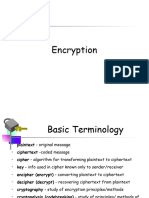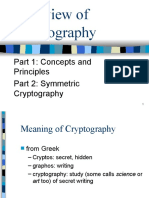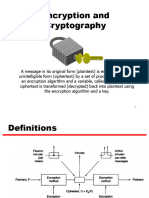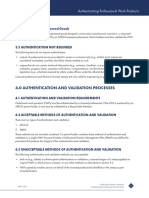0% found this document useful (0 votes)
23 views82 pagesIS Lecture 06 - Cryptography
This document is a lecture on cryptography, covering its definitions, types (symmetric and asymmetric), historical context, and modern techniques. It explains key concepts such as encryption, decryption, hashing, digital signatures, and the goals of cryptography, including confidentiality, integrity, authentication, and non-repudiation. Additionally, it discusses various algorithms and the importance of public key infrastructure (PKI) in managing digital certificates.
Uploaded by
gk0563546Copyright
© © All Rights Reserved
We take content rights seriously. If you suspect this is your content, claim it here.
Available Formats
Download as PDF, TXT or read online on Scribd
0% found this document useful (0 votes)
23 views82 pagesIS Lecture 06 - Cryptography
This document is a lecture on cryptography, covering its definitions, types (symmetric and asymmetric), historical context, and modern techniques. It explains key concepts such as encryption, decryption, hashing, digital signatures, and the goals of cryptography, including confidentiality, integrity, authentication, and non-repudiation. Additionally, it discusses various algorithms and the importance of public key infrastructure (PKI) in managing digital certificates.
Uploaded by
gk0563546Copyright
© © All Rights Reserved
We take content rights seriously. If you suspect this is your content, claim it here.
Available Formats
Download as PDF, TXT or read online on Scribd
/ 82





















































































